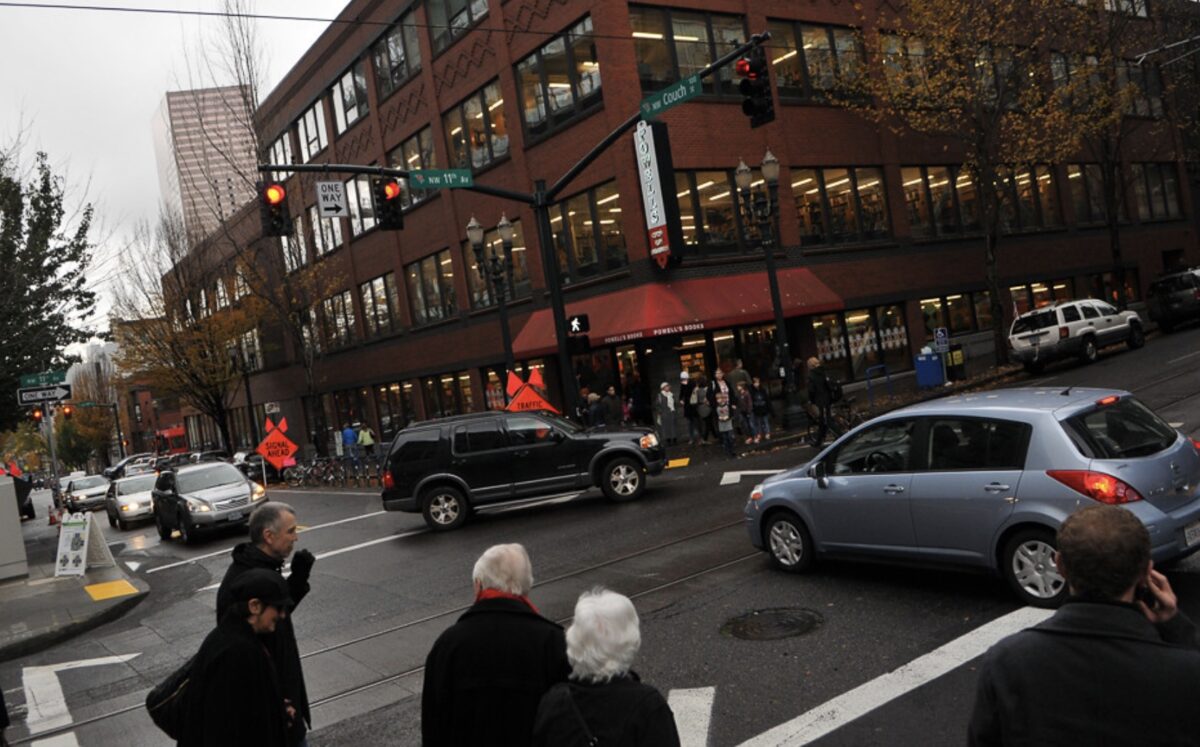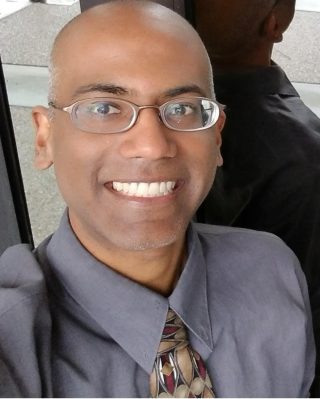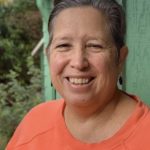
“The top causes of pedestrian deaths are mistakes made by sober, everyday drivers.”
— Vivek Jeevan, safety advocate
Speed kills, and it is the number one cause of pedestrian fatalities in Portland, according to a new independent analysis of crash data led by safety advocate Vivek Jeevan. His group of seven volunteers from BikeLoud PDX, a grassroots nonprofit advocacy group, worked with a statistician to comb through 48 police reports from Oregon Walks’ Fatal Pedestrian Crash Report (released earlier this year). Jeevan trained his group to look for driving and walking behaviors which led to the crashes. This behavioral approach is a noteworthy shift from the usual focus on infrastructure.
The top causes of pedestrian deaths, says Jeevan, “are mistakes made by sober, everyday drivers.”
Advertisement

The report itself is rigorous. Jeevan is a medical physicist and he brings the discipline of the medical sciences to this work: the volunteers followed a well-formulated protocol (PDF); each crash report was analyzed by two different volunteers; conflicting findings were resolved by Jeevan.

I asked him how he decided which “Causes” should be included. He responded that he had done a “literature review” which provided the foundation of the list. But he also wanted to dispel myths about behaviors that get a lot of attention but which are not causing fatalities. Pedestrians on phones running into crosswalks? “Those are issues which didn’t cause a single fatality in our dataset.” He went ahead and included them in the “Cause” column to better make that point.
The purpose of the study is to provide feedback and education about what behaviors to focus on to avoid pedestrian fatalities. For each “Cause,” a traffic instructor can teach a positive driving habit, or best practice, which would prevent it. For example, “Turn your head before your wheels” would prevent many turning movement crashes. “If you can’t see the crosswalk, don’t assume it’s clear.” To better see pedestrians, “look up, scan the horizon, and plan 30 seconds ahead.”
Jeevan points out that most drivers only plan five seconds ahead, and that twice as many pedestrians are killed inside crosswalks as outside.
This is not the type of talk I’m used to hearing from safety advocates. Of the three “E”s of road safety (engineering, enforcement and education) advocates understandably focus on engineering–road width, connectivity, bike lanes, crosswalks, lights. This not only provides a counterweight to an historic “blame-the-victim” tendency (the crash as “accident,” “the victim was wearing dark clothing,” “the cyclist was not wearing a helmet,” etc) but it can lead to improved street design which is known to save lives.
“I truly in my heart think that it takes two years to understand how to drive safely.”
— Vivek Jeevan
The second “E,” enforcement, is a hot-button issue given the role of fallible human enforcers. Education? Well, maybe it’s a little sleepy, it certainly gets short shrift–but it also happens to be Jeevan’s passion, “When someone is educated, it changes the way they walk, bike and drive.”
Jeevan is a recent transplant to Portland from Corvallis, where he founded and ran a non-profit to stand up for the transportation rights of vulnerable road users. Part of what they did was to reach out to drivers to promote conversations about safe driving. He is carfree, and also happens to be a League of American Bicyclists League Cycling Instructor. We talked last week about what it takes to create a “culture of safety,” and he mentioned that in his line of work, radiation oncology, a minimum of over two years of training is required before one qualifies to operate the powerful machines, and continuing education is a must. Yet, “these machines are less dangerous than cars, and what do we require in the way of driver education? I truly in my heart think that it takes two years to learn how to drive safely.”
Given that he is a daily bike rider, and used volunteers from BikeLoud, I asked Jeevan when he was going to do a similar report for crashes involving people on bicycles. “We would love to do cycle crashes next.”
Vivek Jeevan has only lived in Portland for just over a year, but he certainly hit the ground running. We look forward to following his continuing advocacy for vulnerable road users.

— Lisa Caballero, lisacaballero853@gmail.com
— Get our headlines delivered to your inbox.
— Support this independent community media outlet with a one-time contribution or monthly subscription.

